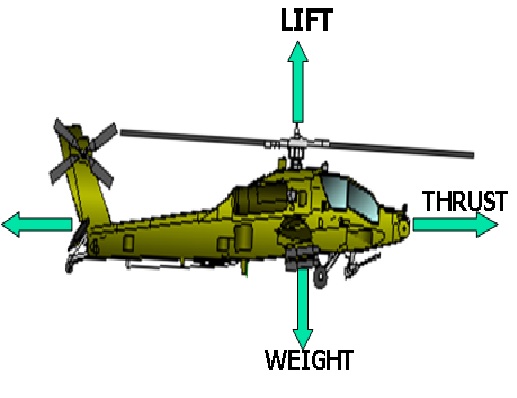Published on Jun 05, 2023
Apache Helicopter
The Apache Helicopter is a revolutionary development in the history of war. It is essentially a flying tank – a helicopter designed to survive heavy attack and inflict massive damage. As a whole, it is a terrifying machine to ground forces.
The Apache is the primary attack helicopter in the U.S.Arsenal. Other countries, including the United Kingdom, Israel and Saudi Arabia, have also added Apaches to their fleet.
In this topic, we’ll look at the Apache’s amazing flight systems, weapon systems, engines, sensor systems and amour systems. Individually, these components are remarkable pieces of technology. Combined together, they make up an unbelievable fighting machine – the most lethal helicopter ever created.
Working Of A Helicopter
Helicopters are the most versatile flying machines in existence today. This versatility gives the pilot complete access to three dimensional space in a way that no airplane can.
The amazing flexibility of helicopters means that they can fly almost anywhere. However, it also means that flying the machines is complicated.
A plane can move forward and turn left or right. It also adds the ability to go up and down. The helicopter can do three things that an airplane cannot.
A rotary motion is the easiest way to keep a wing in continuous motion. The rotating wings of a helicopter are shaped just like the airfoils of an airplane wing, but generally the wings on a helicopter’s rotor are narrow and thin because they must spin so quickly. The helicopter’s rotating wing assembly is normally called the Main Rotor. If you give the main rotor wings a slight angle of attack on the shaft and spin the shaft, the wings start to develop lift.
Main Parts Of An Apache
Apache works in the same way as any other helicopter. It has two rotors that spin several blades. A blade is a tilted airfoil, just like an air plane wing. As it speeds up through the air, each blade generates the lift.
The main rotor, attached to the top of the helicopter, spins six meter blades. As the main rotor spins, it exerts a rotation force on the entire helicopter. The tail rotor blades work against this force-they push the tail boom in the opposite direction. An Apache has double tail rotors, each with two blades.
The pilot maneuvers the helicopter by adjusting a swash plate mechanism. The swash plate changes each blade’s pitch to increase lift. Adjusting the pitch equally for all blades lifts the helicopter straight up and down. Changing the pitch as the blades make their way around to the rotation cycle creates uneven lift, causing the helicopter to tilt and fly in a particular direction.

Evasion And Armour
AThe Apache's first line of defense against attack is keeping out of range. The helicopter is specifically designed to fly low to the ground, hiding behind cover whenever possible. The Apache is also designed to evade enemy radar scanning. If the pilots pick up radar signals with the onboard scanner, they can activate radar jammer to confuse the enemy.
The Apache is also designed to evade heat-seeking missiles by reducing its infrared signature (the heat energy it releases). The Black Hole infrared suppression system dissipates the heat of the engine exhaust by mixing it with air flowing around the helicopter. The cooled exhaust then passes through a special filter, which absorbs more heat. The Longbow also has an infrared jammer, which generates infrared energy of varying frequencies to confuse heat-seeking missiles.
The Apache is heavily armored on all sides. Some areas are also surrounded by Kevlar soft armor for extra protection. The cockpit is protected by layers of reinforced armor and bulletproof glass. According to Boeing, every part of the helicopter can survive 12.7-mm rounds, and vital engine and rotor components can withstand 23-mm fire.
Related Seminar Topics
- Solar-Powered Vehicles
- Solar Power Satellites
- Solar Power Towers
- Solar Sails
- Space Robotics
- Stealth Fighter